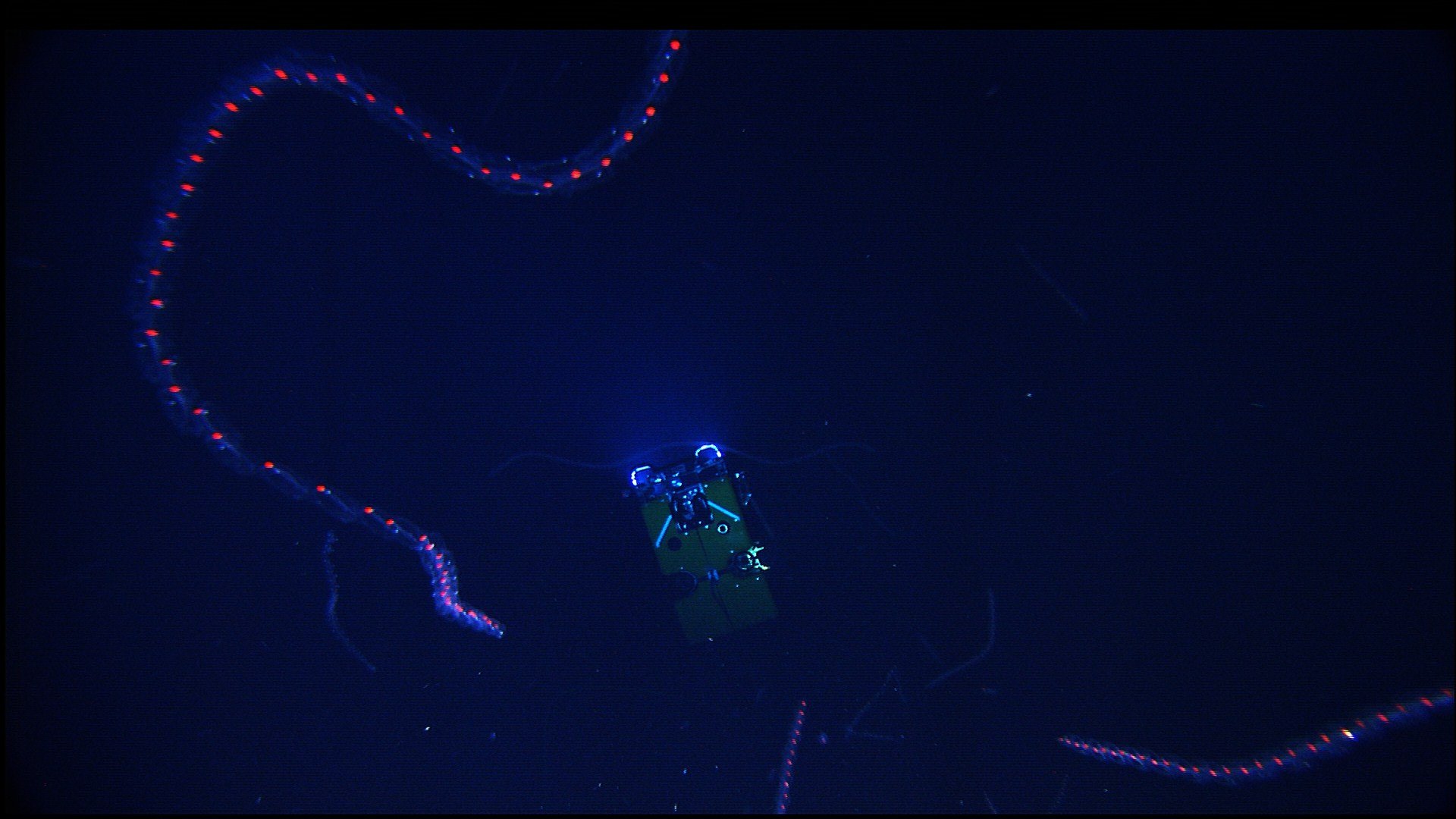|
Hippopodiidae
Hippopodiidae is a family of cnidarians belonging to the order Siphonophorae. Genera: * '' Hippopodius'' Quoy & Gaimard, 1827 * '' Vogtia'' Kölliker, 1853 References Calycophorae Cnidarian families {{Siphonophorae-stub ... [...More Info...] [...Related Items...] OR: [Wikipedia] [Google] [Baidu] |
Calycophorae
Calycophorae is a suborder of Siphonophores alongside two other suborders Physonectae and Cystonectae. This suborder includes the giant siphonophore, ('' Praya dubia''); one of the longest lengthwise extant creatures (40–50m). While the Physonectae have a pneumatophore (a float), nectophore (or nectosome), and a siphosome, Cystonectae lack a nectophore, and Calycophorae lack a pneumatophore. From the bell-shaped nectophores, Physonectae and Calycophorae are called Codonophores or Greek for bell-bearers. The distribution, morphology, and behaviors of Calycophorae species are vast and greatly depend on the species. Calycophoraes typically consist of two nectophores with a siphosome that have many tentacles that grow out of the siphosome. The Calycophoraes move by propelling water out of the nectophore much like how jellyfishes move. The tentacles act as fishing nets where the nematocysts on the tentacles paralyze their prey which are then later fed on. Calycophorae have thre ... [...More Info...] [...Related Items...] OR: [Wikipedia] [Google] [Baidu] |
Hippopodiidae
Hippopodiidae is a family of cnidarians belonging to the order Siphonophorae. Genera: * '' Hippopodius'' Quoy & Gaimard, 1827 * '' Vogtia'' Kölliker, 1853 References Calycophorae Cnidarian families {{Siphonophorae-stub ... [...More Info...] [...Related Items...] OR: [Wikipedia] [Google] [Baidu] |
Hippopodius Hippopus
''Hippopodius hippopus'' is a species of siphonophores in the family Hippopodiidae Hippopodiidae is a family of cnidarians belonging to the order Siphonophorae Siphonophorae (from Greek ''siphōn'' 'tube' + ''pherein'' 'to bear') is an order within Hydrozoa, which is a class of marine organisms within the phylum Cnidaria. A .... References Hippopodiidae Animals described in 1776 {{Siphonophorae-stub ... [...More Info...] [...Related Items...] OR: [Wikipedia] [Google] [Baidu] |
Hippopodius
''Hippopodius'' is a genus of cnidarians belonging to the family Hippopodiidae. The genus has cosmopolitan distribution. This genus now contains only a single species, ''Hippopodius hippopus'', although historically it contained more: * ''Hippopodius cuspitatus'' Moser, 1925 accepted as '' Nectopyramis natans'' (Bigelow, 1911) * ''Hippopodius glabrus'' (Bigelow, 1918) accepted as ''Vogtia glabra'' Bigelow, 1918 * ''Hippopodius gleba'' Leuckart, 1854 accepted as ''Hippopodius hippopus'' (Forsskål, 1776) *''Hippopodius luteus'' Quoy & Gaimard, 1827 accepted as ''Hippopodius hippopus'' (Forsskål, 1776) *''Hippopodius mediterraneus'' Costa, 1836 accepted as ''Hippopodius hippopus'' (Forsskål, 1776) *''Hippopodius neapolitanus'' Kölliker, 1853 accepted as ''Hippopodius hippopus'' (Forsskål, 1776) *''Hippopodius pentacanthus'' (Kölliker, 1853) accepted as ''Vogtia pentacantha'' Kölliker, 1853 *''Hippopodius serratus'' Moser, 1915 accepted as ''Vogtia serrata'' (Moser, 1 ... [...More Info...] [...Related Items...] OR: [Wikipedia] [Google] [Baidu] |
Siphonophorae
Siphonophorae (from Greek ''siphōn'' 'tube' + ''pherein'' 'to bear') is an order within Hydrozoa, which is a class of marine organisms within the phylum Cnidaria. According to the World Register of Marine Species, the order contains 175 species thus far. Although a siphonophore may appear to be an individual organism, each specimen is in fact a colonial organism composed of medusoid and polypoid zooids that are morphologically and functionally specialized. Zooids are multicellular units that develop from a single fertilized egg and combine to create functional colonies able to reproduce, digest, float, maintain body positioning, and use jet propulsion to move. Most colonies are long, thin, transparent floaters living in the pelagic zone. Like other hydrozoans, some siphonophores emit light to attract and attack prey. While many sea animals produce blue and green bioluminescence, a siphonophore in the genus '' Erenna'' was only the second life form found to produce a red ligh ... [...More Info...] [...Related Items...] OR: [Wikipedia] [Google] [Baidu] |
Vogtia (cnidarian) ''
{{Disambiguation, genus ...
Vogtia may refer to: * 1439 Vogtia, a minor planet * ''Vogtia'' (cnidarian), a genus of cnidarians in the family Hippopodiidae * ''Vogtia'', a genus of moths in the family Pyralidae, synonym of ''Arcola Arcola may refer to: Places ; Australia * Arcola, Grafton, a heritage-listed house in New South Wales ;Canada * Arcola, Saskatchewan, a town in the Province of Saskatchewan * Arcola Airport, an airport in the Province of Saskatchewan ;England * Ar ... [...More Info...] [...Related Items...] OR: [Wikipedia] [Google] [Baidu] |
Cnidaria
Cnidaria () is a phylum under kingdom Animalia containing over 11,000 species of aquatic animals found both in Fresh water, freshwater and Marine habitats, marine environments, predominantly the latter. Their distinguishing feature is cnidocytes, specialized cells that they use mainly for capturing prey. Their bodies consist of mesoglea, a non-living jelly-like substance, sandwiched between two layers of epithelium that are mostly one cell (biology), cell thick. Cnidarians mostly have two basic body forms: swimming Medusa (biology), medusae and Sessility (motility), sessile polyp (zoology), polyps, both of which are Symmetry (biology)#Radial symmetry, radially symmetrical with mouths surrounded by tentacles that bear cnidocytes. Both forms have a single Body orifice, orifice and body cavity that are used for digestion and respiration (physiology), respiration. Many cnidarian species produce Colony (biology), colonies that are single organisms composed of medusa-like or polyp (z ... [...More Info...] [...Related Items...] OR: [Wikipedia] [Google] [Baidu] |

